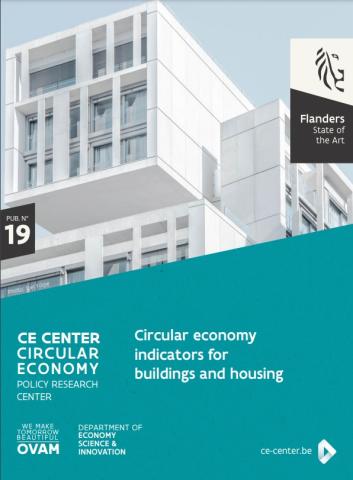Circular economy indicators for buildings and housing
Circular economy indicators for buildings and housing
This report presents a circular economy monitor for the societal need fulfillment system of buildings and housing in Flanders. It is part of the CE monitor of the Circular Economy Policy Research Center. The indicators of this monitor were compiled in this way to reflect the circular economy, including its economic, environmental and societal aspects.
The indicators show that a single building or housing unit might seem circular at first glance. For example, the recycling rates of the majority of construction materials are high, the average lifetime of buildings is increasing, and the heating efficiency of residential houses is increasing. However, the need fulfillment system in its entirety is not circular yet.
In Flanders, built areas are still expanding at the cost of natural land and wildlife habitats. More virgin raw materials are excavated for the building sector than secondary raw materials are delivered from the recycling routes. Downcycling, i.e. the loss of material quality in the recycling route, is common practice. Data on non-residential buildings, building material compositions, end-of-life processes, and impacts of buildings and housing on society are vastly missing.
This report shows the widespread data sources necessary for a CE monitor, ways to improve data quality for the indicators, and gives suggestions for new data demands for a more insightful monitor. Collaborative stakeholder interaction was crucial to compile this monitor and it will be essential to further develop the presented indicators and to expand the indicator set.

